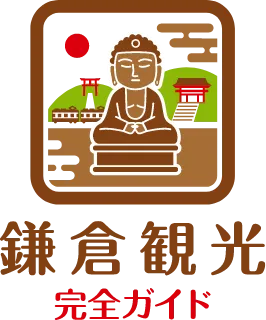Autumn Leaves of Kakuon-ji Temple (覚園寺)
Discover the Autumn Leaves at Kakuon-ji Temple (覚園寺)
Hidden deep in the Yakushido Valley of Nikaido, Kakuon-ji Temple is one of Kamakura’s most enchanting spots for autumn leaves. As the season deepens, the temple grounds glow in crimson and gold, blending with the soft light of stone lanterns. The vivid hues of maple, kaede, and ginkgo create a scene straight from a Japanese picture scroll. The best viewing season runs from late November through mid-December, though peak beauty sometimes extends into early winter.
What makes Kakuon-ji Temple special is that its autumn is meant to be felt, not just seen. Photography is prohibited in the inner viewing area, allowing visitors to immerse themselves in silence—the scent of moss, the sound of rustling leaves, and the crisp valley air. The unseen and unrecorded moments are the true essence of this temple.
When Is the Best Time to Visit?
The foliage at Kakuon-ji Temple usually peaks between late November and mid-December. Depending on the year, colors may arrive slightly earlier than other temples, but generally align with Kamakura’s autumn rhythm. During midday, sunlight softly illuminates the gradient of reds and golds, while in the late afternoon, shadows deepen through the valley, adding a quiet intensity to the view.
On select evenings, special nighttime visits and gentle lantern lighting create an ethereal atmosphere. The maples appear softly glowing in the warm light of torches, offering a dreamlike contrast to the daytime scene. Experiencing both day and night at Kakuon-ji reveals two distinct faces of autumn.
Photo Highlights and Must-See Spots
Most of the autumn foliage is concentrated in the paid viewing area. The Yakushi Hall, Kamakura’s largest thatched-roof structure, displays refined Zen architecture that harmonizes beautifully with fiery leaves. Behind it, the towering metasequoia trees turn golden, contrasting strikingly with the autumn sky.
In front of the Aizen Hall, the density of maple trees makes it a favorite photography spot. The reflection of crimson leaves on the surface of a water basin looks like a natural painting. Photography is permitted in this area, allowing visitors to capture the colors freely. Beyond Aizen Hall, however, cameras must be put away—inviting you to simply see, breathe, and be present.
The red-painted Jizo Hall also stands out vividly against the autumn colors. Inside rests the “Black Jizo,” a standing wooden statue designated as a National Important Cultural Property, normally hidden from view except during the annual August festival. During autumn, visitors can feel its solemn presence even from outside. The temple halls framed by fall colors embody Kamakura’s timeless autumn landscape.
Embrace the Quiet Hours of Morning
The atmosphere of Kakuon-ji changes beautifully throughout the day. In the early morning, the valley air is cool and pure, with only the sound of birds echoing. Dew-kissed leaves glimmer in the soft light—Kamakura’s quiet luxury. Such moments are best enjoyed by overnight visitors rather than day trippers.
In the evening, guests staying at Tosh’s Place (トシズプレイス) can take advantage of the nighttime lighting. After the crowds have gone, the lantern-lit maple leaves reveal a calm, mystical beauty. It’s a rare, intimate way to experience Kamakura’s autumn—a slow and soulful journey rather than sightseeing.
How to Get There from Tosh’s Place (トシズプレイス)
From Kamakura Station, take a bus toward “Daitonomiya” and get off at the last stop. From there, it’s about a 10-minute walk to the temple. The route passes by historic shrines such as Kamakura-gu Shrine (鎌倉宮) and Egara Tenjinsha Shrine (荏柄天神社), making it perfect for a combined history-and-nature stroll.
From Tosh’s Place, mornings are ideal for quiet visits, while evenings allow for enjoying the gentle glow of the lanterns before returning. The temple’s calm energy makes it a perfect “mindful moment” within your Kamakura stay.
Wrap-Up: Autumn Serenity and a Local Way to Experience Kamakura
Kakuon-ji Temple’s autumn is not about spectacle but about stillness. The beauty lies beyond the camera—in the quiet air, the moss beneath your feet, and the light filtering through crimson leaves. Spending time here reveals the essence of Kamakura: harmony between history, silence, and nature. For guests of Tosh’s Place, it’s a journey not just to see autumn, but to feel it deeply.
Toshi’s Evaluation (2025)
| Evaluation item | Score | Rationale |
|---|---|---|
| Scenery | 10 | The vibrant autumn foliage blends perfectly with the historic architecture, creating a stunning landscape. Both daytime and evening light offer different and photogenic scenery. |
| Accessibility | 8 | About 10 minutes from Kamakura station by bus and on foot. Clear signage and straightforward access, yet not the closest from the station. |
| Historic and Cultural Value | 10 | Established in 1218, with numerous National Treasures and Important Cultural Properties. Widely recognized domestically and internationally. |
| Comfort and Crowding | 9 | Some crowding, but comfort remains high. Facilities (toilets, benches) are sufficient, and visitor etiquette is well managed. |
| Online Reviews | 8 | High ratings on review sites and social media. Praised for its serene ambiance and beautiful leaves, with minor comments about access and photography rules. |
Overall Score: 45
Kakuonji stands out for its historical significance and picturesque scenery, being one of Kamakura’s premier autumn leaf spots. Its tranquil, sacred atmosphere combined with spectacular autumn colors gives visitors a unique seasonal experience.
